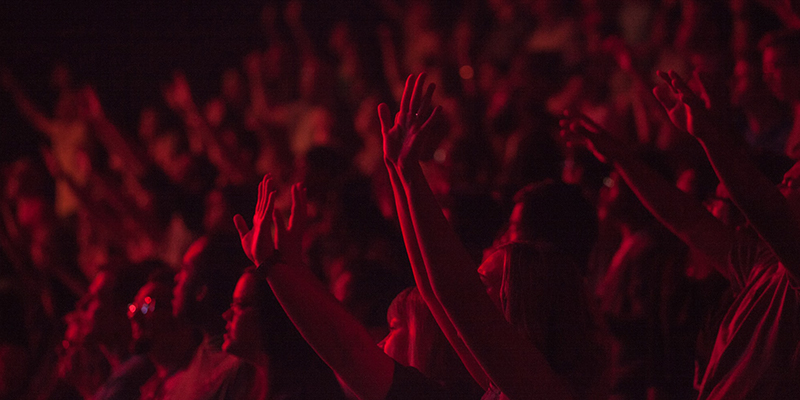Human centric experiential in a new world
It has been 6 months since our watershed moment; since COVID-19 disrupted our everyday lives in Melbourne. It’s hard to forget the moment earlier this year in March when the F1 2020 Australian Grand Prix came to a grinding halt and what felt like the collapse of normality shortly followed thereafter.
Prior to the pandemic, the demand for experiential was on the rise with expenditure predicted to reach an all-time high in 2020. A survey conducted by AgencyEA in 2018 on 1000 industry professionals across Fortune 500 companies found that one in three marketers struggle to prove ROI and secure sufficient budget. However, regarding experiential, the survey found that over 80% of respondents gain valuable insights from data collected from experiential campaigns and events. The following year, in the fourth quarter of 2019, IPA Bellwether report revealed that 11.9% of marketers were forecasting an increase in spending in event marketing over the following two years, more than any other marketing discipline. The ability to trace the relationship between experiential activity and consumer behaviour can be attributed to the growing demand for experiential in recent years, especially when proving ROI is a typical challenge faced by marketers.
The value of experiential was subject to growing recognition, and rightfully so. The backbone of experiential and live marketing is lead data generation, often intertwined with emerging technology and most importantly, raw human connection, proving a powerful and near essential formula to capture ROI. The combination of learning by participating in activities mixed with storytelling and tech is an undeniably successful tool for marketing and retention, enabling users and visitors to walk away with an engaging experience and a powerful memory imprint of the brand and product at hand.
“An experience invites us to engage with the product by choice. It puts us face-to-face with the brand in a more intimate way than if it was coming from a one-way piece of communication, shouting from above a freeway or popping up on a screen while we’re trying to watch a video.”
Tyson Carr, Neonormal
The spread of the corona virus and global restrictions on gathering and movement lead to significant cancellations of events worldwide. In April 2020, Pico Global, our Strategic Global Partner conducted a COVID-19 Impact Research study, which observed global cancellations occurring in a range of activities, including product launches, sponsorship activities, sales conferences, partner meetings, face-to-face sales meeting and up to 75% of trade shows. And that’s in April alone, before we had any second waves popping up. In the wake of the pandemic, we saw an inevitable shift to increased digital activity. Considering online and virtual events have quickly become the norm, it’s hard to believe that earlier this year, over 60% of event planners who responded to a poll at EventMB’s Pivot to Virtual event stated they had never been involved in planning a virtual event. The pivot to online has proved beneficial to businesses as it paved the way for inclusive, accessible, environmentally friendly, and thoroughly measurable online activity.
Virtual brand experiences have left our global tech partners flirting with a realm of possibilities; low-cost, high scaled executions with global reach. Omen and Hypebeast lead the way with global best practices in the virtual event space with their OMEN Underground event, a virtual gaming tournament with a live stream panel that activated a range of audiences, intersecting communities across esports, music, fashion and skating. The livestream generated outstanding results with 5.3m impressions and 481k views with a 92% positive sentiment result. This is a testament to the power of virtual. While the traditional landscape for partnerships has changed, virtual experiences have bred a unique new landscape for value producing partnership opportunities, at a time when online audiences have never been more active.
Times have certainly changed, and though we do not have a crystal ball to reveal what the future holds, we are likely to see a permanent shift in the experiential landscape moving forward. Virtual experiences have served their purpose, but let’s not forget that lockdown, restrictions and staying at home has geared up a local and global audience thirsty for interaction. This is evident in the success of Babe Wine’s free manicure truck experience that was executed for New Yorker’s in dire need of pampering following the wake of the crisis. It was designed to be a one-off experience, however after gaining a huge amount of PR and social traction, Babe Wine are now looking to expand the initiative to additional locations. This isn’t just a wine company giving manicures. This is an organisation recognising a community’s profound need for comfort and connection, then crafting experience around it. Moving forward, businesses have an opportunity to create genuine connections with the communities of tomorrow, whose needs have changed in the new normal. Our deep primal need for meaningful real-life, human centric experiences has never been more prominent.
“The new normal is a state of being, a constantly changing dynamic that’s felt acutely in the marketing space, and more broadly in the world today. As brands, businesses, agencies and humans generally try to keep up with technology, shifting habits and behaviours, in this new world, there is no longer a ’normal’. This constant state of change is the new normal.”
Madeleine Preece, Neonormal

By Simone Parwak
Posted September 2, 2020
Sim is our Production Coordinator. Her passion for process combined with her ardour for creating meaningful connections make her a treasured piece in executing major campaigns and delivering powerful brand experiences.
